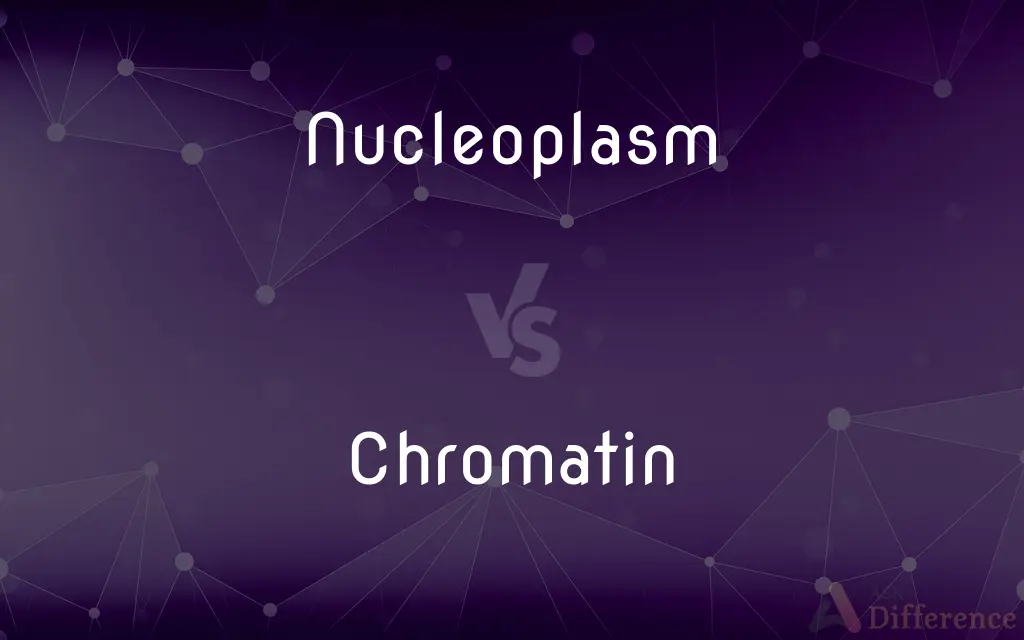Nucleoplasm vs. Chromatin — What's the Difference?

Difference Between Nucleoplasm and Chromatin
ADVERTISEMENT
Compare with Definitions
Nucleoplasm
Similar to the cytoplasm of a cell, the nucleus contains nucleoplasm, also known as karyoplasm, or karyolymph or nucleus sap. The nucleoplasm is a type of protoplasm, and is enveloped by the nuclear envelope (also known as the nuclear membrane).
Chromatin
Chromatin is a complex of DNA, protein and RNA found in eukaryotic cells. Its primary function is packaging long DNA molecules into more compact, denser structures.
Nucleoplasm
The protoplasm of a cell nucleus. Also called karyoplasm.
Chromatin
A complex of nucleic acids and proteins, primarily histones, in the cell nucleus that stains readily with basic dyes and condenses to form chromosomes during cell division.
Nucleoplasm
The protoplasm of a cell nucleus
ADVERTISEMENT
Chromatin
(biology) A complex of DNA, RNA and proteins within the cell nucleus out of which chromosomes condense during cell division.
Nucleoplasm
The matter composing the nucleus of a cell; the protoplasm of the nucleus; karyoplasma.
Chromatin
Tissue which is capable of being stained by dyes.
Nucleoplasm
The protoplasm that constitutes the nucleus of a cell
Chromatin
The deeply staining substance of the nucleus and chromosomes of eukaryotic cells, composed of DNA and basic proteins (such as histones), the DNA of which comprises the predominant physical basis of inheritance. It was, at the beginning of the 20th century, supposed to be the same substance as was then termed idioplasm or germ plasm. In most eukaryotic cells, there is also DNA in certain plasmids, such as mitochondria, or (in plant cells) chloroplasts; but with the exception of these cytoplasmic genetic factors, the nuclear DNA of the chromatin is believed to contain all the genetic information required to code for the development of an adult organism. In the interphase nucleus the chromosomes are dispersed, but during cell division or meiosis they are condensed into the individually recognizable chromosomes. The set of chromosomes, or a photographic representation of the full set of chromosomes of a cell (often ordered for presentation) is called a karyotype.
Chromatin
The readily stainable substance of a cell nucleus consisting of DNA and RNA and various proteins; during mitotic division the chromatin condenses into chromosomes
Share Your Discovery

Previous Comparison
Novice vs. Tyro
Next Comparison
Contract vs. Shrink














































